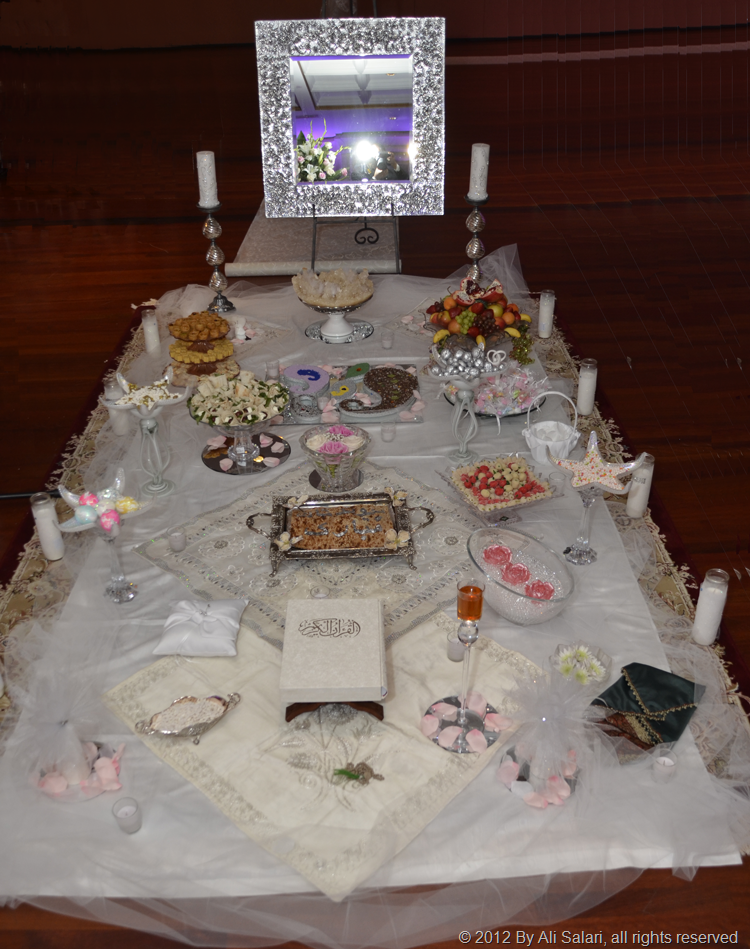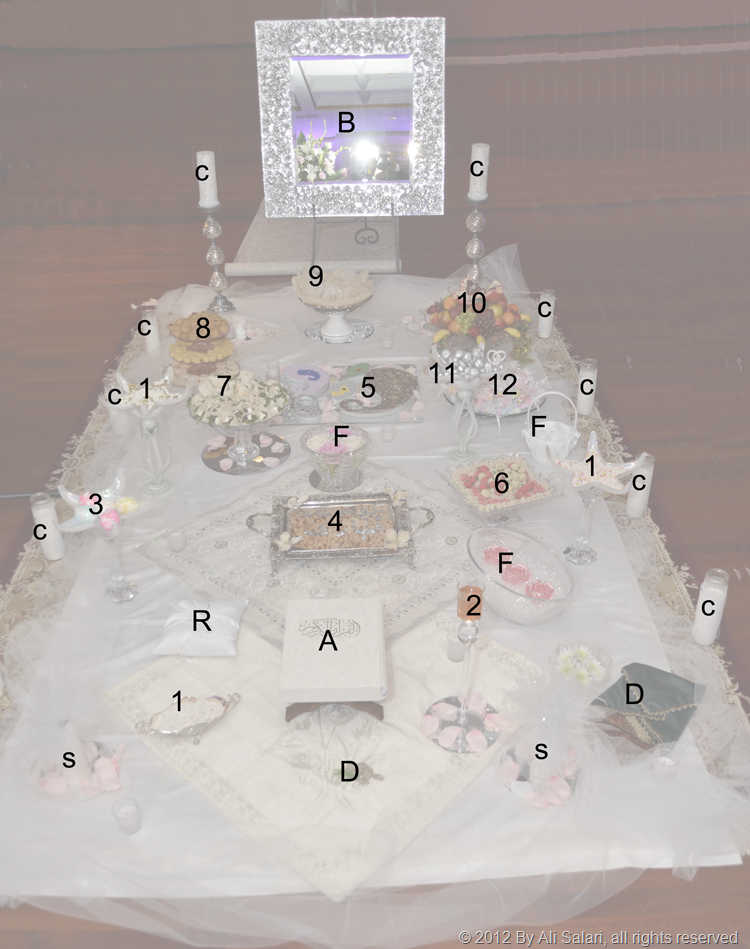In this post, I’m going to Introduce the Persian Wedding Spread, and briefly describe it. In a few future posts, I will highlight individual parts of the spread, and explain their significance.
Nikon D7000 and Sigma 18-200mm F3.5-6.3 DC OS HSM Zoomed at 18mm, f/3.5 1/60s
Persian weddings usually, like those of many religions, consist of two parts:
- The actual Ceremony (be it Religious, or Legal) call AGHD (عقد)
- The Celebration – which could be immediately after, or sometimes months or even years after.
Historically, the Aghd was a very small ceremony that took place at the home of the bride and attended only by immediate family and select friends, and of course the officiator.
Today, the Aghd tends to take place on the day of the celebrations, and in many cases, all guests would be invited. In some cases however, the “real” Aghd still takes place as a small ceremony in private, but the ceremony is repeated on the day of the Celebration, with much more elaborate setting.
Depending on the background of the families, and their religious followings, the items that make up the spread and the placement and direction of them vary.
What is consistent, is there is always a book[A], a mirror[B] that should be set in a way that the bride and groom can see themselves in, and candles[C].
Future Articles will have some close-ups, and explain more about the parts

No comments :
Post a Comment
Please leave a comment.